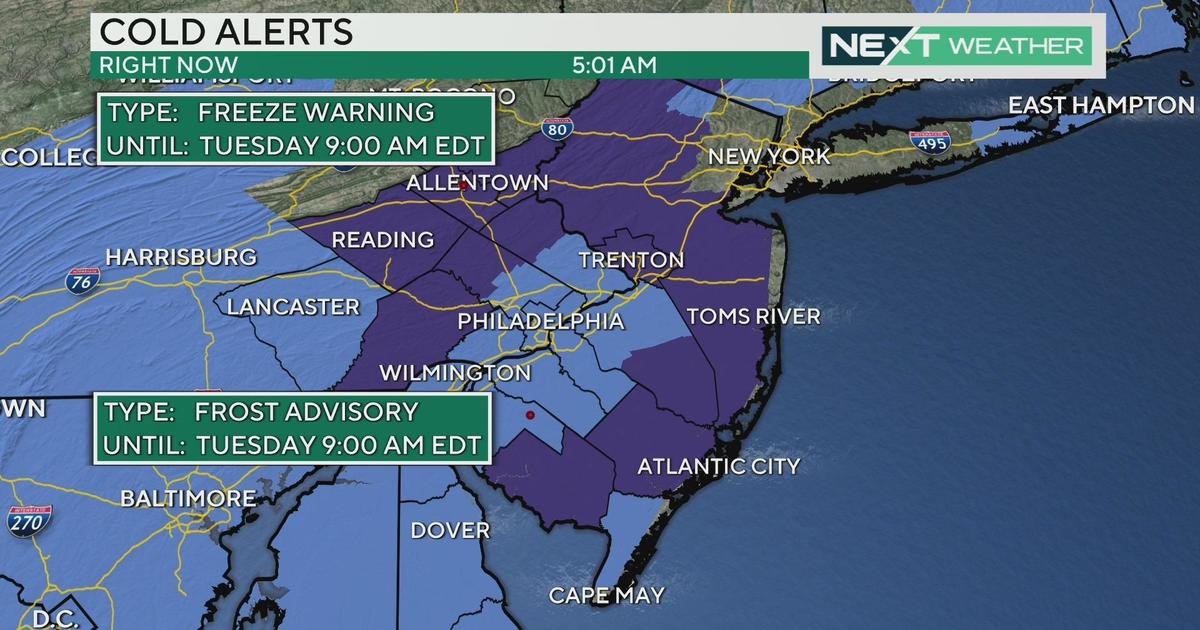Calmer To Stormier To Calmer
By Carol Erickson
PHILADELPHIA (CBS) - One week ago Sandy eyeballed us, waiting until Monday to unleash full fury.
We have had several days to cleanup and the dry trend continues right through Tuesday.
But while we're cleaning and restoring powers, a coastal low takes shape to the south.
The models have this system moving at different speeds and intensifying at different locations on the East coast.
All the models so far have this potential Nor'easter within 75 miles of one another. The GFS, the American model, is fastest. The European model (ECMWF) is the slowest in speed, at this point.
Remember, we have a number of model runs between now and the event and things can change as it draws closer.
We have a high pressure system to the north that would like to be a roadblock to the faster solution but would also keep strong winds in play. That has the ripple effect of keeping tidal flooding a possibility. We will need about two feet to start minor tidal flooding and 3 feet to trigger a coastal flood warning.
After Sandy's damage, areas that could normally be protected from an onslaught of wind and water would be more vulnerable. As the system draws parallel to us, the winds will start to shift to off shore and that is the point of improvement.
When does that point come? Will the GFS or ECMWF get it right?
Whatever the case, best to prepare for winds of 40 mph, the chance of some flooding (though likely not river at this time), and the chance of some snow northwest as cold air gets increasingly drawn into a big dip in the jet stream.
After Thursday, the weather improves for a number of days. This system is not Sandy but secure objects you've cleaned up from Sandy so you don't have to deal with them a second time.



